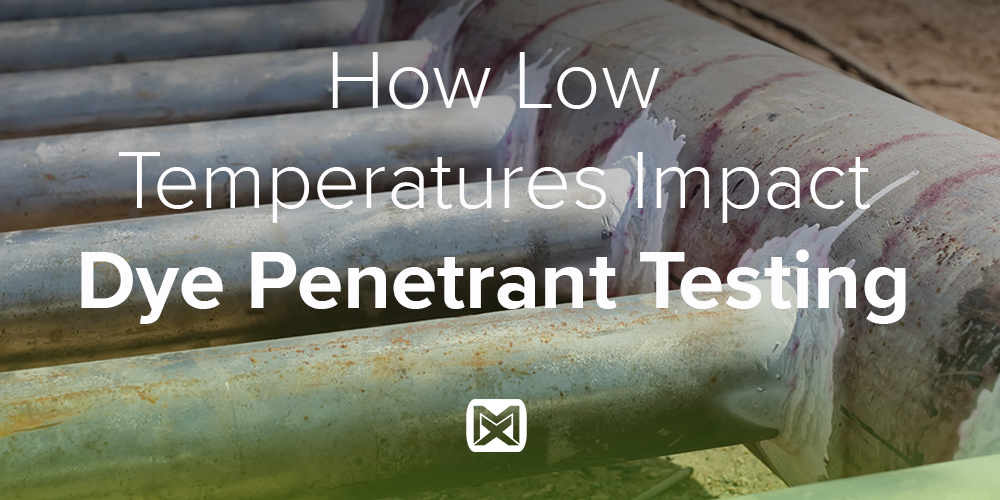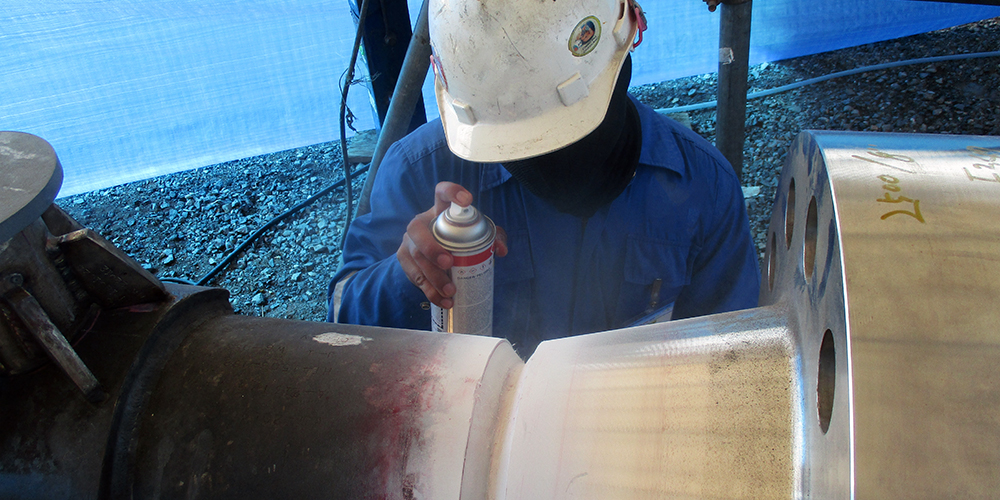November 28, 2017 | by Cheri Stockhausen, Product Applications Manager

The operating temperature range for penetrant inspection as specified in ASTM E1417 Standard Practice for Liquid Penetrant Testing is 40°F to 125°F (4°C to 52°C), but how is the penetrant inspection affected at temperatures below 40°F (4°C) and can the inspection process be adjusted to achieve acceptable results?
To answer these questions, we evaluated SKC-S cleaner/remover, SKL-SP2 solvent removable dye penetrant and SKD-S2 non-aqueous developer at a range of temperatures in order to figure out what NDT inspectors can expect when using these, or similar quality dye penetrant products when inspecting at lower temperatures
At lower temperatures in the range of 32°F – 50°F (0°C – 10°C), the solvent cleaner will take longer to dry.
We used 75°F (24°C) as our ambient, standard operating temperature, and observed how decreasing temperatures impacted how quickly the solvent cleaner dried. Below are our suggested drying time for solvent-based cleaner/removers at lower temperatures.
| Temperature | Cleaner Drying Time |
|---|---|
| 75°F / 24°C | Standard |
| 50°F / 10°C | 2 x Standard |
| 40°F / 4°C | 3 x Standard |
| 32°F / 0°C | 4 x Standard |
It is critical to make sure the solvent has evaporated during the precleaning step either by wiping with a clean, lint free cloth or using air dryers to ensure a clean and dry part prior to penetrant application. Unevaporated cleaner remaining in indications can impede penetrant entry into the surface breaking indications.
Penetration time should also be extended since the viscosity of penetrant increases with decreasing temperatures, which slows down penetration and can significantly impact the test results.
| Temperature | Dwell Time |
|---|---|
| 75°F / 24°C | Standard |
| 45°F / 7°C | 2 x Standard |
| 32°F / 0°C | 2.5 x Standard |
Developer drying time is more of a challenge and our tests showed the developing action is impeded because of the slower solvent evaporation. When the developer dries, the indications become fuzzy or show excessive bleed out.

We were not able to get good results at 32°F (0°C) because the developer remained wet and did not dry within a reasonable amount of time. At 38 – 40°F (3 – 4°C), and with some air movement, developer film will dry at 5 times the standard time at 75°F (24°C).
| Temperature | Developer Drying Time |
|---|---|
| 75°F / 24°C | Standard |
| 40°F / 4°C | 5 x Standard |
A positive note is at low temperatures, we found good indications with extremely small and tight defects. The slow drying rate of the developer film allows greater bleed out of the penetrant from the defect. For large defects, longer development time caused excessive bleed out making indication interpretation more difficult.
155 Harlem Avenue
Glenview, IL 60025, USA
Telephone: +1 847-657-5300
Contact Magnaflux Customer Service